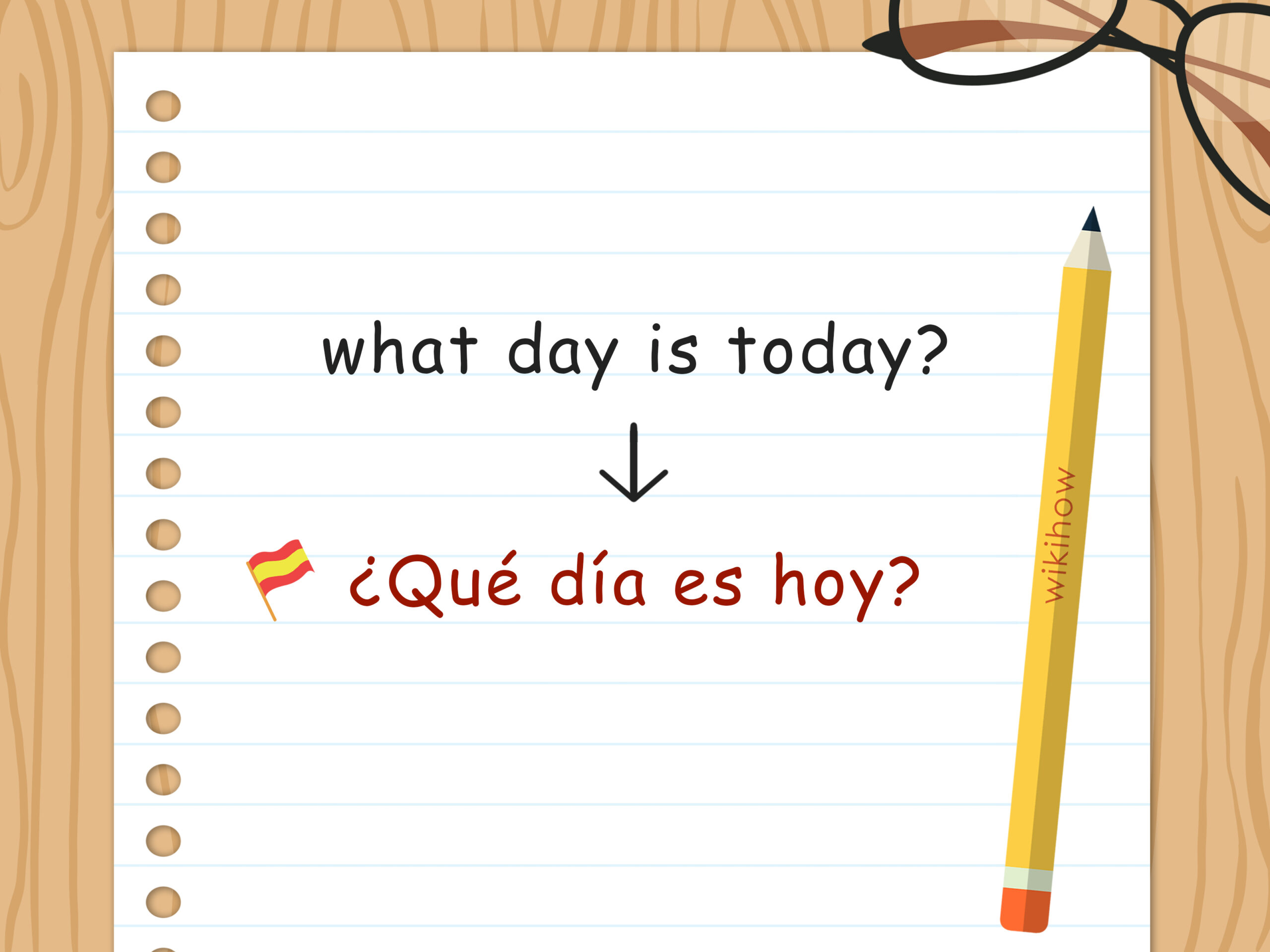How to Write in Spanish – If you’re writing to someone you don’t know personally, formal language is important in Spanish correspondence. Even if you can speak, listen, and read Spanish, you may not have learned formal writing. While most of the basic letter-writing conventions are the same regardless of the language in which the letter is written, you must follow specific cultural formalities when you write a Spanish letter. These formalities will vary depending on the person to whom you’re writing and why you’re writing your letter
Table of Contents
How to Write in Spanish
As you advance in your language learning journey, you will probably have to start writing different kinds of texts.
Spanish, just as the majority of languages out there, has its own rules for different types of writing.
The following sections will teach you everything you need to know to get started.
How to write letters in Spanish

The first thing you need to do before starting to write a letter is to decide whether it has to be formal or informal.
This will have an impact not only on the body of the letter, but also (and especially) on the way you start and finish writing it.
There are a couple of well-established rules you should bear in mind when writing a letter in Spanish:
- Querido/a (Dear) is only used in informal letters, while Estimado/a (Dear) is the preferred form in formal ones.
- You normally use just the first name of the person you are writing to if the letter is informal (Querido Julián), but Señor (Mr.), Señora (Mrs.) or Señorita (Miss) and a surname if the letter is formal (Estimado Sr. González).
- Use tú (informal you) in the body of informal letters, but usted/ustedes (formal you singular/plural) in formal ones.
- When closing a letter, you can send Besos y abrazos (Hugs and kisses) in casual letters, but never in formal ones. Use Saludos (Regards) in semi-formal letters, and Cordialmente/Atentamente (Yours sincerely) in formal ones.
How to write an email in Spanish

Writing an email is not that easy. In Spanish, as in all the other languages, there are some politeness rules (as well as grammar and punctuation ones) that need to be respected.
To start an email you’ll need to write: “Hola, X:” Yes, there’s a comma after “Hola” (or Buenas, or other greeting), then you need to say the name of the person followed by a colon.
Then there’s the body of the email, where you can write the message you want to communicate (beware of grammar, spelling and accents!). Depending on the email, you’ll have to be more formal or informal. If you want to know more about levels of formality in Spanish, you can easily find articles on the web. In general, “tú” is for an informal email, while “usted” is used in formal contexts.
At the end of the email you’ll write the final greetings, like: “Un saludo”, “Muchas gracias y ¡qué tengas un buen día!”, “Hasta pronto”, and so on. Again, choose the greeting according to the level of formality of your email. Don’t forget to sign your email!
How to write an essay in Spanish

Starting to write essays in Spanish is possibly one of the most challenging tasks for beginner learners.
Going from simple sentences to several paragraphs requires a lot of practice, but there are tons of fixed expressions that can be used in order to make this process easier.
Depending on the type of essay you need to write, you will have to cover one or more of the following points:
- Giving your opinion. This is very common in essays, especially the ones included in official Spanish exams. Make sure you use expressions that help you introduce your personal opinions, such as en mi opinión (in my opinion), me parece que (it seems to me that) or creo que (I believe that).
- Agreeing and disagreeing. Another very common type of essay is the one where you are given a sentence or quotation and you have to agree or disagree with it. Useful expressions here can be estoy de acuerdo (I agree), no estoy de acuerdo (I disagree) and es falso que (it is false that).
- Backing your claims. If you say that something is false or that you know for a fact something is true, you should back your claims with some evidence. Try to introduce words and expressions such as según (according to), demostrar (to demonstrate) and la fuente (the source).
- Conclusion. A conclusion normally summarizes the main topics of the essay and answers any questions and hypotheses that were posed in the introduction. When writing your conclusion, use expressions like en conclusión (in conclusion), por esta razón (for this reason) and en resumen (in summary).
Texting in Spanish

Texting in any language has its own separate set of rules.
For instance, depending on the recipient of the message, two texts can look completely different even if they include the exact same information:
Xq tki. (Because I have to go.) This is very informal, sent to a friend.
Porque tengo que irme. (Because I have to go.) This is sent in a much more formal situation, normally to someone with whom we do not have a very close relationship.
As you can see from the first example, there are a lot of abbreviations and slang words you can use while texting in Spanish, much like you would do in English.
It would be impossible to mention all of them here, but if you learn their most common traits, you will be able to text in Spanish like a pro:
- Letters are omitted. The most common feature you will see is the omission of vowels and consonants.
- For example: xa — para (for), gnl — genial (great)
- For example: One of the most common examples is the expression tkm — te quiero mucho (I love you so much)
- For example: b — bien (good), q — que/qué (that/what)
- salu2 — saludos (regards), 100pre — siempre (always)
- For example: NATO — OTAN, World Health Organization / WHO – Organización Mundial de la Salud / OMS
Spanish creative writing

Creative writing is basically any kind of writing that is not professional, academic or journalistic.
Since this definition is so broad, there are also many types of writing that can fall into this category, the most common ones being poetry, novels, scripts, short stories, fairy tales and screenplays, among others.
Creative writing can be an amazing way to improve your Spanish language skills.
It forces you to think, be creative, ask questions and find answers for them. Your brain will be working hard while you write creatively, and the fact that you will be using vocabulary and grammar rules you have previously studied will make you remember them easier.
The ideal scenario for a learner of Spanish who wants to give creative writing a go would be having a native Spanish speaker that can read what the learner is writing and give detailed feedback (spelling and grammar errors and overall writing skills that could be improved).
Unfortunately, this is quite difficult to find, so the second-best option is to find resources that will help the learner get some Spanish writing practice (such as writing apps, creative writing websites, textbooks that teach writing, writing prompts, etc.).
Regardless of the way you choose to practice your creative writing skills, remember rule number one of every good writer: You have to read much more than you write!
Journaling in Spanish

Journaling is basically putting our thoughts and emotions into words.
It is a practice that helps many people cope with anxiety, depression or just their daily life and problems, and it becomes a safe space where the writer creates their own rules.
Since there are no established rules, journaling can be a good way of practicing writing in Spanish without stress. No one except you will have access to your journal (unless you want to), so it does not matter if you make spelling mistakes or write grammatically incorrect sentences as long as you are doing it in Spanish.
If you feel that writing a journal in Spanish can be challenging, try to break your thoughts down into smaller thoughts.
There are many topics you can write about that will allow you to practice your Spanish writing skills in an undemanding way:
- Your bucket list.
- Your dreams.
- Things you are thankful for.
- Reasons for learning Spanish.
- Things that motivate you.
- Things that make you sad.
- Your goals for this week/month/year.
- Your fears.
- Your favorite places/people and why.
The list goes on and on. Write about the topics you want, whenever you want and however you want. Just remember to do it on a daily basis to be able to enjoy all the benefits journaling in Spanish can bring to you, both mentally and linguistically speaking.
Other types of Spanish writing

There are many more types of Spanish writing, and each of them has its own intrinsic characteristics and rules.
Mentioning all of them would be impossible here, so here you have a selection of a few of them:
- Recipes. Recipes have a very easy structure: a list of ingredients and steps to cook the dish. You can start practicing writing recipes in Spanish by using the infinitive when you give the instructions (Pelar las patatas — To peel the potatoes), and move on to the imperative mood when you study the Spanish imperativo (Pela las patatas — Peel the potatoes).
- Greeting cards. Even though we normally buy ready-made cards, adding a few words of our own could be a very nice finishing touch. If you are giving a birthday card, remember to include some wishes like ¡Feliz cumpleaños! (Happy birthday!) or ¡Te deseo mucha felicidad! (I wish you lots of happiness!). If you want to give a Valentine’s Day card, try to make it even more personal by creating a romantic card in Spanish yourself. Do not forget to express your feelings with phrases like:
- Mi amor (My love)
- Mi cariño (My sweetheart)
- Te amo (I love you)
- ¡Gracias! (Thanks!)
- Para ti. (For you.)
- ¿Me echas una mano? (Will you help me?)
- Te quiero. (I love you.)
- Que aproveche. (Enjoy your meal.)
- Compra leche. (Buy some milk.)
How to Type in Spanish

Spanish and English keyboards are different.
Because of that, typing in Spanish can be a challenge for the first few times.
There are several ways in which you can type in Spanish on your device:
- You can install a keyboard on your device.
- You can use Alt codes (Windows) and Opt codes (Macs).
- You can use online tools such as TypeIt.
If you take a look at a Spanish keyboard, you will notice some letters, characters and symbols have changed, moved or disappeared.
Let’s have a look at these changes.
Main differences between English and Spanish keyboards
Once you have your device ready to type in Spanish, you will notice some things are… different.
There are enough differences between a Spanish and an English keyboard to write a whole book, so I will only mention the three most important ones:
- Accent marks. Spanish vowels can have an accent mark (á, é, í, ó, ú). In order to type it, your first have to type the accent key on your keyboard (‘) and then the vowel you want to add the accent mark to.Another letter with a mark is the Spanish letter ñ. In this case, you only have to press the (:) key, because Spanish keyboards have their own ñ key. The last mark you will need in Spanish is the diéresis (¨). In order to type it, press Shift + the (‘) key. Then type u or i.
- Question and exclamation marks. One of the first interesting facts we learn about the Spanish language is that it has opening question and exclamation marks.In order to type the opening question mark, press Shift and (=). The closing question mark can be typed by pressing Shift and (-). As for the exclamation marks, the opening one is very easy: just press the (=) key. The closing one can be typed by pressing Shift + 1, like on your normal keyboard.
- Symbols. Another change you will notice when typing in Spanish is the series of symbols you get by pressing Shift + numbers 2 to 0. Your keyboard probably has the sequence @#$%^&*(), while the Spanish keyboard will give you “·$%&/()=.
There are other differences between both keyboards, like the position of hyphens, dashes, apostrophes, colons, semi-colons, stops and commas, among others.
In the beginning, all these differences can be a little bit overwhelming, and you will probably type the wrong symbol or letter because your brain will want to do it automatically in your normal keyboard layout.
As with everything, practicing Spanish typing will be the key (no pun intended) to get you used to the new layout. There are even Spanish typing games where you can practice all you want until you feel fully comfortable using the Spanish keyboard.
Key Spanish Writing Rules

Every language has a set of writing rules that decide how a piece of written or typed text looks like.
Even though some rules seem to be almost universal (like the first letter of a sentence being capital), others vary from language to language.
If you want to be the next Cervantes, you should get acquainted with the main Spanish writing rules and the major differences between writing in English and writing in Spanish.
Below are a few of them.
Spanish spelling
Spelling is probably the most important feature to consider when writing in any language.
We need to know how to write a word correctly so that the reader understands us.
Spanish spelling is definitely easier than English spelling since we normally write and pronounce the words in the exact same way, i.e. each sound normally corresponds to a single letter and vice versa.
However, there are a couple of spelling “situations” that can give you a bit of a headache if you do not pay attention:
- The letter h has no sound. Regardless of its position in a word, it will always be soundless (zanahoria — carrot, hoguera — bonfire, hueso — bone). This letter changes the sound of the letter c when they go together (chaleco— vest, coche — car, noche — night), and even though it has no sound, it can change the meaning of a word (ola— wave, hola — hello).
- There are some couples of letters that can be confusing. It would be impossible for you to learn every word containing these pairs, so the best you can do is check a dictionary in case of doubt. The letters that normally cause problems to learners of Spanish are b/v, r/rr, g/j, ll/y and the “triplets” c/k/q and c/s/z.
- Spanish uses accent marks. Accent marks may be small, but they are very important. If a word has an accent mark in Spanish, do not ignore it, because accent marks can easily change the pronunciation and meaning of words (tráfico— traffic, trafico — I smuggle, traficó — he smuggled).
If you want to improve your Spanish spelling skills, you can try some Spanish spelling games. They will make the learning process much more enjoyable, and the topic more accessible to you.
Additionally, you may want to install a Spanish spell checker. This way you can be sure the majority of spelling errors you make while writing in Spanish will be detected and corrected.
Capitalization rules in Spanish
Spanish and English share many capitalization rules, but they also have some key differences.
Learning Spanish capitalization is actually pretty straightforward. You just have to remember the words that are not capitalized in Spanish.
For instance, Spanish does not capitalize, among others:
- Months
- Days of the week
- Languages
- Nationalities
- Religions and their adjectives
- Social and political movements
- The pronoun yo (I) unless it is the first word in a sentence
- Book titles (except for the first word)
- Movie titles (except for the first word)
- Personal titles (except when they are the first word in a sentence)
Spanish punctuation
Punctuation is another area where English and Spanish share a lot of features.
However, there are some Spanish punctuation rules that may be surprising for learners of Spanish.
These are the main ones (some of them have already been mentioned):
- Spanish has an opening question mark and an opening exclamation mark (¿,¡).
- Spanish does not capitalize the first word after a colon.
- Spanish uses the colon in the opening of letters. While English uses a comma (Dear Mrs. Petunia,), Spanish uses a colon (Estimada señora Petunia:).
- In Spanish, there is no Oxford comma at all. The last two items of a list will always be joined with a conjunction like y (and) or o (or).
- Spanish and English write out numbers differently. In Spanish, you use a period to separate groups of thousands (e.g. 1450 or 1,450 would be 1.450 in Spanish). Spanish uses the comma as the decimal separator (so 1.5 would be 1,5 in Spanish).
- Spanish normally leaves commas, periods and other punctuation marks outside the quotation marks. (English: “I love you.” vs. Spanish “Te quiero”.).
- Dialogue formatting is very different in Spanish. If you decide to write dialogues in Spanish, find a good Spanish dialogue resource first, because there are a couple of big differences in the way English and Spanish format their dialogues. The biggest difference is possibly the fact that Spanish uses a dash to open a dialogue (instead of quotation marks) and to enclose the dialogue tag (instead of commas). For example:
- English: “I love him,” she said, “I always have.”
- Spanish: –Lo amo –dijo ella–. Siempre lo he amado.
Spanish sentence structure
Sentence structure refers to the internal organization of a language, i.e. the order we have to put elements in a sentence so that it is grammatically correct.
Many learners of Spanish think that since both Spanish and English follow the general pattern S + V + O (Subject + Verb + Object), both languages build sentences in the exact same way.
This is true sometimes, as in the following two examples:
Marta está bebiendo café. (S + V + O)
Marta is drinking coffee. (S + V + O)
Unfortunately, this is not always the case, and learners of Spanish should take into account a couple of Spanish sentence structure rules if they want to come up with correct sentences, even if they are trying to produce basic Spanish sentences:
- In Spanish, you can omit the subject. If you know who you are talking or writing about, you do not need to mention that person (Tengo hambre — I am hungry). This is possible because verbs in Spanish have a different ending for each grammatical person.
- Adjectives come after the noun in Spanish. There are a few exceptions with a change in meaning, but overall, adjectives always come after the noun (la camisa blanca — the white shirt).
- Nouns and adjectives have to agree in Spanish. When you write a sentence in Spanish, you have to take a look at the nouns. Every determiner, quantifier, adjective and adverb that refers to a noun must have the same gender and number (el perro negro — the black dog, all words masculine and singular in Spanish; las tazas rojas — the red cups, all words feminine and plural in Spanish).
- Negation is very simple in Spanish. The majority of sentences become negative in Spanish by adding no in front of the main verb. No other changes are normally needed. You can also make negations in Spanish by using negative adverbs like nunca (never) and nadie (no one).
Spanish abbreviations
Abbreviations can be used in both formal and informal contexts, and even though they tend to work similarly across languages, there are a couple of things you should know about Spanish abbreviations and how to use them when writing in Spanish:
- Even though personal titles are not capitalized when written in full, their abbreviations are capitalized. For example:
- señor — Sr. / Mister
- señora — Sra. / Mrs.
- doctor — Dr. / Doctor
- usted — Vd. / formal you
- se ruega contestación — S.R.C. / RSVP
- la UE — la Unión Europea / the EU (European Union)
- la ONU — la Organización de Naciones Unidas / the UN (United Nations)
Other differences between English and Spanish writing rules
Although less important, there are some differences between English and Spanish you should take into account when writing in Spanish:
- We write dates differently. In Spanish, the order of writing the date is always day/month/year. So, while an American might read the date 02/07/2018 as February the 7th 2018, for a Spanish-speaking person it would be July the 2nd 2018.
- We use different measurement systems. This is something to bear in mind not only while writing, but when using Spanish in general. Not everybody knows what inches, feet, pounds or miles are (especially in Spain). Spanish-speaking countries use the metric system, so we have centimeters, meters, kilograms, kilometers, etc.
Conclusion
Writing in Spanish can be tricky for non-native speakers. There are several ways to say the same thing and it’s easy to get it wrong if you’re not familiar with the language.
